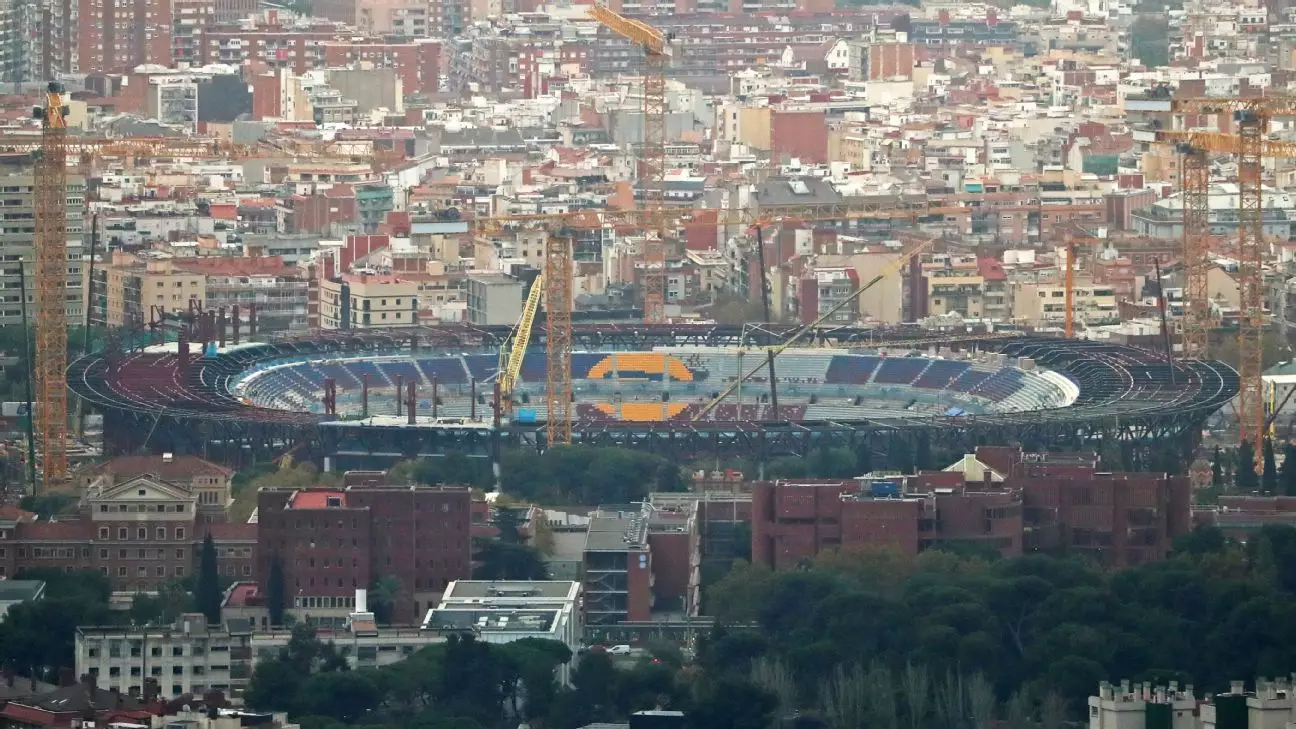FC Barcelona’s long-awaited return to their iconic Camp Nou stadium is shrouded in uncertainty, as internal sources indicate that the timeline has been pushed back, potentially delaying the return until next season. This revelation contradicts club president Joan Laporta’s public assurances that the team aims to be back in their home by March. The initial expectation was to return by November, coinciding with the club’s 125th anniversary, but as that date has lapsed, the optimism surrounding the March target is also waning.
The underlying reasons for this delay are attributed to unforeseen complications in the redevelopment process. Reports suggest that the renovations on the second tier of the stadium have proven to be more extensive and time-consuming than originally anticipated. This situation is compounded by additional logistical challenges such as the installation of a new pitch. It’s critical to ensure that the playing surface meets the elite standards required for a club of Barcelona’s stature, which adds yet another layer of complexity to the project.
The continued presence of construction machinery across the pitch area serves as a stark visual reminder of the ongoing works. Not only is the timing for the pitch installation crucial, but the potential need for three full months to prepare the field effectively raises questions about when the team can truly make a safe and competitive return.
Analysis of the club’s strategic intentions reveals the intricacies of their planning amid this uncertainty. Laporta’s aim for a March return is not just a matter of sentiment; it is also a strategic move dictated by UEFA regulations. After securing a home game in the knockout stage of the Champions League, changing the venue for their matches becomes impossible. The window for such a shift only opens between the group and knockout phases, which adds pressure to expedite the redevelopment process.
To manage these challenges, Barcelona is contemplating a staged re-entry to their historic ground, with plans to limit attendance initially to about 60,000 fans. This capped return would allow continued work on the stadium, transforming it gradually into a state-of-the-art facility anticipated for completion by the summer of 2026.
Since vacating Camp Nou in 2023, Barcelona has taken residence at the Olympic Stadium, negotiating a lease extension until March 2024. This arrangement provides a temporary refuge, but the club is eyeing a more permanent homecoming as they navigate through these delays. Should further extensions be necessary, Barcelona has indicated a willingness to prolong their temporary stay while striving for an eventual full return.
As the club grapples with these logistical complexities, the hope remains that the storied narrative of FC Barcelona will soon return to the pages of Camp Nou’s illustrious history. By increasing its capacity to around 105,000, the revamped stadium seeks to reestablish Barcelona not only as a football club but as a historic venue that stands at the pinnacle of European football.

Leave a Reply